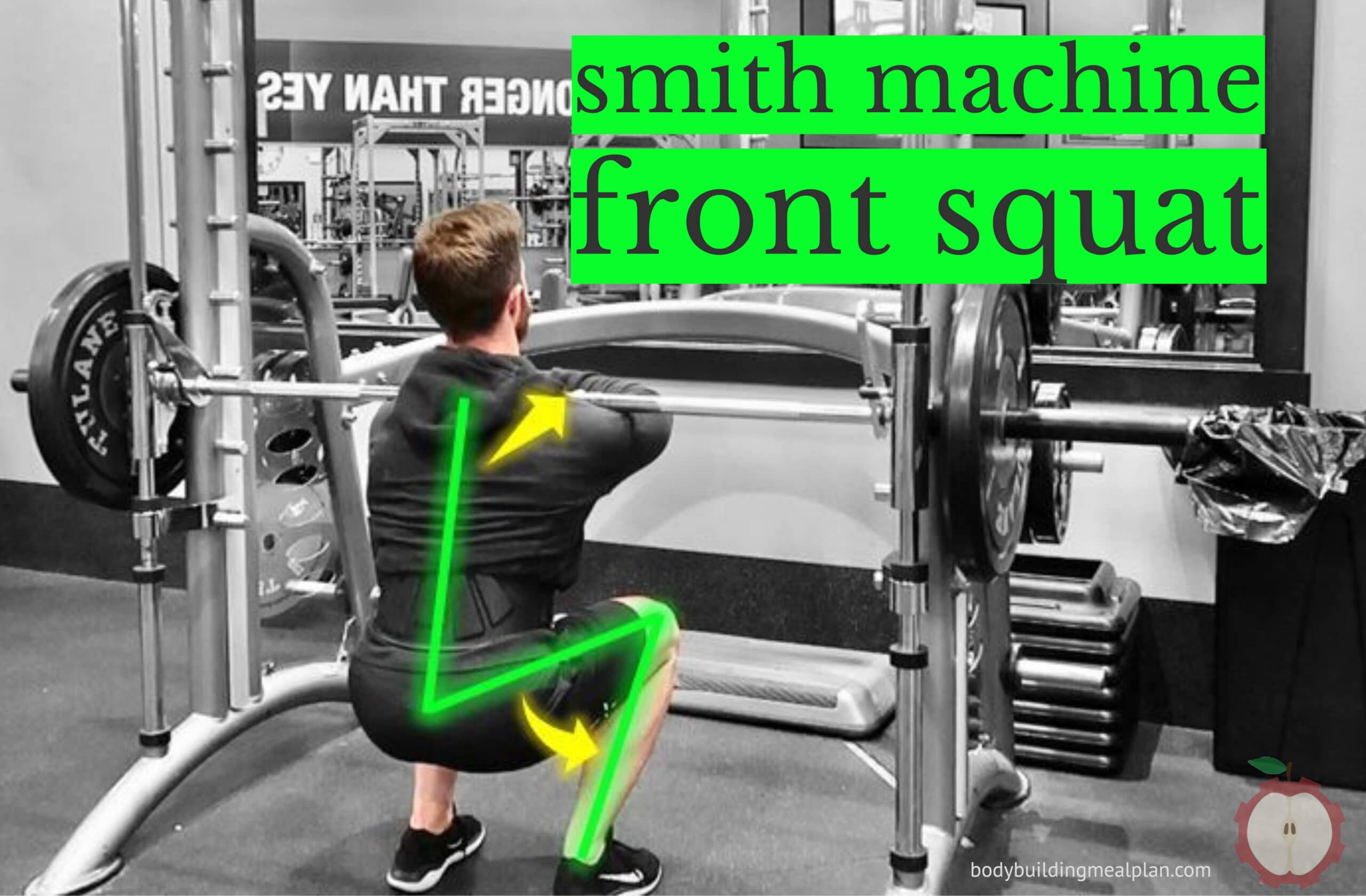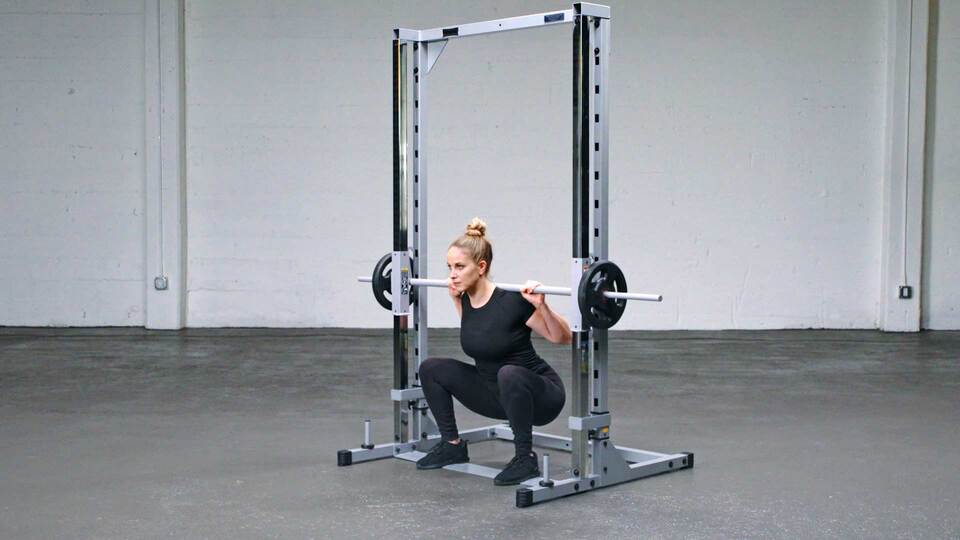Hey there, fitness enthusiasts! If you're looking to step up your leg game, the Smith machine squat might just be your new best friend. Whether you're a gym rookie or a seasoned lifter, this exercise is a game-changer. It's designed to help you build strength, improve form, and sculpt those quads, glutes, and hamstrings like never before. But hey, before you jump right in, there's a lot to learn about this beast of a machine.
Now, you might be wondering, "What’s so special about the Smith machine squat?" Well, buckle up because we’re about to dive deep into why this exercise is worth your time. Unlike free weights, the Smith machine offers stability and guidance, which can be a lifesaver for those who struggle with balance or form. Plus, it's a great way to isolate specific muscle groups and push your limits safely.
But hold up—there’s more to it than just sliding a bar up and down. There’s technique, variations, and even some misconceptions to clear up. So, whether you’re aiming for bigger legs, better form, or just trying to spice up your routine, this guide has got you covered. Let's get started!
Read also:Jasmine Pinedas Shocking Survival Story A Tale Of Courage And Resilience
Table of Contents
- What is Smith Machine Squat?
- Benefits of Smith Machine Squat
- Biography of the Smith Machine
- Proper Technique for Smith Machine Squat
- Common Mistakes to Avoid
- Variations of Smith Machine Squat
- Comparison to Free Weight Squats
- Safety Tips for Smith Machine Squat
- Muscles Worked During Smith Machine Squat
- Conclusion and Final Thoughts
What is Smith Machine Squat?
Alright, let's break it down. The Smith machine squat is an exercise performed on—you guessed it—a Smith machine. This machine features a barbell that moves along a fixed track, providing stability and control during your squats. It's like having a personal trainer holding the bar steady for you, but without the awkward small talk.
What makes the Smith machine squat unique is its ability to guide your movement, reducing the risk of injury and allowing you to focus on form. Plus, it’s a great option for those who want to lift heavier without worrying about balance. But hey, don’t let the machine do all the work—your muscles still gotta earn their keep!
Benefits of Smith Machine Squat
Let’s talk about why this exercise is worth your time. First off, the Smith machine squat is all about building strength. By stabilizing the bar, it allows you to lift heavier weights than you might with free weights. And let's be real, who doesn't love the feeling of smashing a new PR?
But it's not just about strength. The Smith machine squat also helps improve form by guiding your movement. This can be especially helpful for beginners or those recovering from injuries. Plus, it targets multiple muscle groups, including your quads, glutes, and hamstrings, making it a killer full-body workout.
Biography of the Smith Machine
Before we get into the nitty-gritty, let’s take a quick look at the history of the Smith machine. This bad boy was invented by a guy named Jack Kerso in the 1950s. He wanted to create a safer, more controlled way to lift weights, and voila—the Smith machine was born.
Here’s a quick breakdown of its key features:
Read also:Russias Plan To Prolong Ukraine War Decoding The Strategies Behind The Conflict
| Feature | Description |
|---|---|
| Inventor | Jack Kerso |
| Year Invented | 1950s |
| Primary Use | Squats, presses, and more |
Proper Technique for Smith Machine Squat
Now that you know what the Smith machine squat is, let’s talk about how to do it right. Proper form is key to avoiding injury and getting the most out of your workout. Here’s a step-by-step guide:
- Adjust the bar to a comfortable height for your shoulders.
- Stand with your feet shoulder-width apart, toes pointing slightly outward.
- Grab the bar with an overhand grip, slightly wider than shoulder-width.
- Lower your body by bending your knees and pushing your hips back, keeping your chest up.
- Descend until your thighs are parallel to the ground, or as low as feels comfortable.
- Push through your heels to return to the starting position.
Remember, the bar’s fixed path will guide your movement, but you still need to focus on keeping your core engaged and your back straight.
Common Mistakes to Avoid
Even the best of us make mistakes, but here are a few to watch out for:
- Heels lifting off the ground: Keep your weight in your heels to maintain balance.
- Leaning too far forward: Keep your chest up and shoulders back to avoid strain on your lower back.
- Not going low enough: Aim for parallel thighs to get the full range of motion.
These little tweaks can make a big difference in your performance and safety.
Variations of Smith Machine Squat
Feeling like mixing things up? There are plenty of variations to keep your workouts fresh:
Front Smith Machine Squat
This variation places more emphasis on your quads by positioning the bar on the front of your shoulders. It’s a great way to target those thighs and add some variety to your routine.
Bulgarian Split Squat
For an extra challenge, try the Bulgarian split squat. This unilateral exercise improves balance and targets each leg individually, helping to correct muscle imbalances.
Comparison to Free Weight Squats
So, how does the Smith machine squat stack up against free weight squats? Here’s a quick comparison:
- Stability: The Smith machine provides more stability, making it easier for beginners or those with balance issues.
- Range of Motion: Free weight squats allow for a more natural range of motion, but the Smith machine offers consistency.
- Strength Gains: Both can help you build strength, but the Smith machine allows for heavier lifts without compromising form.
Ultimately, the choice depends on your goals and preferences.
Safety Tips for Smith Machine Squat
Safety first, always. Here are a few tips to keep you injury-free:
- Warm up properly before starting your workout.
- Start with lighter weights to perfect your form.
- Use the safety pins to catch the bar if you lose control.
Remember, it’s better to start small and progress gradually than to risk injury by going too heavy too soon.
Muscles Worked During Smith Machine Squat
Let’s talk about the muscles you’ll be targeting:
- Quadriceps: The primary movers during the squat.
- Glutes: Help with hip extension and stability.
- Hamstrings: Assist in knee flexion and hip extension.
- Core: Engaged to maintain balance and stability.
With so many muscles involved, it’s no wonder the Smith machine squat is such a powerful exercise.
Conclusion and Final Thoughts
Well, there you have it—the ultimate guide to Smith machine squats. From its benefits and proper technique to common mistakes and variations, we’ve covered it all. Remember, consistency and proper form are key to getting the most out of your workouts.
So, what are you waiting for? Head to the gym, grab that Smith machine, and start building those legs. And don’t forget to share your progress with us in the comments below. Let’s build a stronger, fitter you together!


